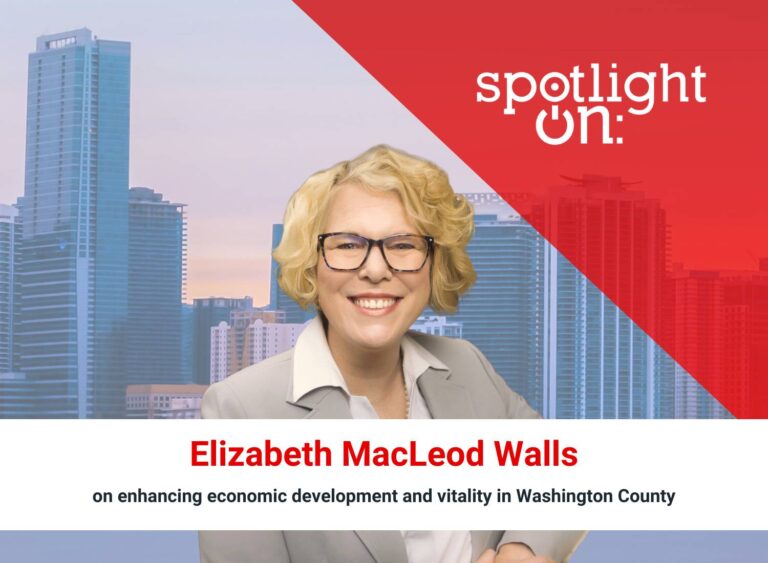Atlanta’s transportation investments fuel real estate and equity efforts
 October 2024 — Atlanta’s real estate market continues to thrive, with transportation infrastructure at the heart of the city’s booming development.
October 2024 — Atlanta’s real estate market continues to thrive, with transportation infrastructure at the heart of the city’s booming development.
During the opening panel of the Focus: Atlanta 2024-2025 Launch Conference, titled “Beyond the BeltLine: The impact of transportation infrastructure on Atlanta’s real estate boom, what’s in the pipeline, and what more is needed?,” key leaders gathered to discuss how transit development has been driving real estate growth and what needs to happen to maintain momentum and equity. Moderated by Ryan Gandolfo, senior editor at Capital Analytics, the discussion featured insights from Collie Greenwood, CEO of MARTA; Nancy Flake Johnson, president and CEO of the Urban League of Greater Atlanta; and Brian McGowan, president of Centennial Yards.
Greenwood highlighted the importance of long-term investment in transit infrastructure as a driver for both real estate development and economic growth. “With dedicated, forward-thinking leadership, we know real estate developments near transit perform better in terms of rents, and hotels in cities with direct airport links thrive as well,” Greenwood said, emphasizing the crucial role transit plays in elevating the value of nearby properties.
This focus on transit-led development aligns with recent efforts by Atlanta’s leadership to enhance transportation access across the city. Earlier this year, Mayor Andre Dickens proposed a new MARTA rail station connecting riders to the BeltLine, an initiative aimed at improving accessibility and closing the socioeconomic divide in the city. In April, MARTA received a $750,000 federal grant to plan for transit-oriented development which will enable MARTA to drive affordable housing and spur development in historically underserved areas, including significant changes near the Oakland City MARTA station. This investment not only catalyzes real estate growth but also aims to address long-standing disparities in investment in southwest Atlanta communities.
While new investments aim to improve access, Johnson emphasized the need to address disparities in transit access, particularly as rising rents push more residents into suburban areas with fewer transportation options. “Our suburban communities are disadvantaged. As city rents rise, people are pushed into suburbs where they lack access to the transit needed to reach their jobs,” she said.
Johnson also urged for intentional planning to prioritize underserved communities in future transit projects, stating, “We must be intentional in ensuring that as MARTA continues to expand, we prioritize the neighborhoods that need it most.”
According to the “A Tale of Two States: State of Black Georgia” report by the Urban League, community members have highlighted increased investment in transit-oriented development, enhanced educational requirements for law enforcement, and increased teacher pay as key strategies to improve the social and economic conditions for those living and working in metro Atlanta.
McGowan added a perspective from the real estate development side, pointing out that transit infrastructure plays a fundamental role in shaping urban development, referring to the Centennial Yards project as a prime example of how transit can fuel large-scale projects. “Transit-oriented development is a thing across the world. If you think about Centennial Yards, the entire system grew from there,” he said, reinforcing the idea that Atlanta’s growth is deeply intertwined with its transportation networks.
In a recent interview with Focus:, McGowan expanded on this connection, addressing some of the broader challenges facing the region. “At a regional level, Atlanta struggles with economic inequality and transit, and as home prices go up, affordability becomes a significant issue. Mayor Andre Dickens is focused on making housing affordable, but we also need to tackle workforce development, transit, and zoning issues to allow for higher density in neighborhoods to create more affordable housing. Traffic and affordability are problems that all growing regions struggle with, but they are all tied to real estate, and what is happening in real estate is directly correlated to these issues.”
To close the panel, Greenwood pointed to MARTA’s long-term investments as essential in preparing the city for future growth and major events. “You can’t get ready for a world-class event like the World Cup without decades of investment, and MARTA has done that. Our plans not only think about businesses but we are equally focused on disadvantaged people, whereas transit-oriented development thinks about affordable housing.”
For more information, visit:













